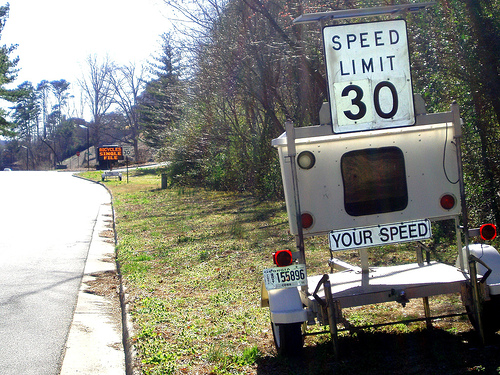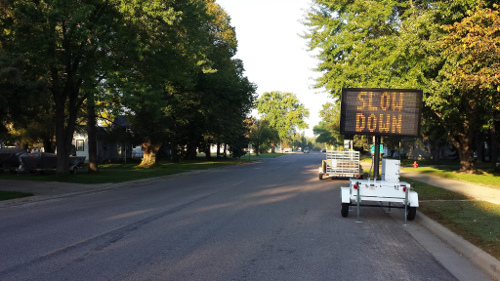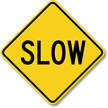Digital safety signs mean a traffic engineer has given up
We’re delighted to be joined by Chuck Marohn of Strong Towns for this post.
You’re driving down an open road you travel every day, thinking more about your work, your kids or what awaits you at your destination than your surroundings. You don’t notice the cones or the construction signs, but when the big digital safety sign displays your excessively high speed to the entire world, you immediately know what to do.
Slow down.
Digital safety signs dramatically improve the safety of construction projects. They do what the highway environment does not naturally do: communicate the need to dramatically slow down. Highways are designed as high-speed environments, so drivers feel comfortable driving at high speeds. Cones, barrels and temporary signs are partially effective in alerting drivers to the need to slow down in temporary construction zones, but the digital display of one’s speed is very powerful feedback.
This approach has been so successful in construction zones that traffic engineers and others have begun to use digital speed signs in other ways. The most interesting is as a traffic calming device within urban neighborhoods.
I was meeting with a traffic engineer recently about changing the design along a neighborhood street where excessive speed creates a dangerous environment for pedestrians and bikers. He acknowledged that speed was a problem and that it was not a safe place for people outside of a car. But, his suggested solution took me off guard: install a digital speed sign.
While a construction project along a highway is a temporary situation, one where slow speeds are necessary but not normal, a neighborhood street is permanent and static. If that street is communicating the wrong thing to drivers – if the lanes are excessively wide, shoulders not used for parking and vegetation cleared way back like a highway – than the street is designed incorrectly. No temporary digital display of a driver’s speed can permanently compensate for a poorly designed street.

Ultimately, digital speed signs like this one still leave the choice of whether to slow down to drivers. What about speed humps, chicanes, and other traffic calming tricks? From TimothyJ.
In the United States, the engineering profession has done a brilliant job of designing highways that are safe and provide a high degree of mobility. For urban environments, however, we’ve generally misapplied highway design techniques and, in the process, created environments that are not only unsafe, but expensive to build and actually yield low rates of private investment.
For neighborhood streets, where there is complexity in the built environment and an expectation that pedestrians, bikers and other non-motorized individuals will use the space, a temporary digital display sign showing a driver’s speed is simply an indication of failure.
If you see a digital safety sign in your neighborhood, you know what needs to happen. Fix the street.
Category: Automotive, Pedestrian safety, Resources, Road safety




















Hi Chuck, good article. Do you know anything about the second photo? The license plate on the trailer says Georgia, but the lighted sign in the background says “Bicycles Single File” which is not the law in Georgia.
Hi, David- I’m the editor of the blog. I sourced the image from Flickr. My guess is maybe there was an injury from someone going around the curve in the background? Not sure though. It’s impressive that you could even make out the Georgia plates – or maybe I just need bifocals. Do your friends call you “Eagle Eye” Huntsman?